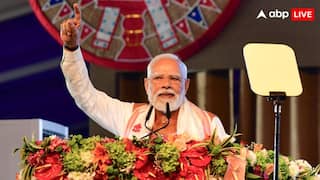South Surges Ahead In Post-Liberalisation Economy. Check India's Richest And Poorest States
EAC-PM report: West Bengal, once a leading economic powerhouse, which has seen a steady decline. In 1960-61, the state accounted for 10.5% of India's GDP; today, its share has halved to 5.6%

EAC-PM report: A report by the Economic Advisory Council to the Prime Minister (EAC-PM), released on Tuesday, reveals that Southern states have significantly outpaced others post-liberalisation, driving India's GDP growth and boasting higher-than-average per capita incomes. The report highlights that Karnataka, Andhra Pradesh, Telangana, Kerala, and Tamil Nadu now collectively contribute 30 per cent of India's GDP. This surge contrasts sharply with the struggles of other regions, particularly the eastern states, which have lagged behind.
One of the most intriguing findings concerns West Bengal, once a leading economic powerhouse, which has experienced a steady decline. In 1960-61, the state accounted for 10.5 per cent of India's GDP; today, its share has halved to 5.6 per cent. Similarly, West Bengal’s per capita income, once 127.5 per cent of the national average, has fallen to 83.7 per cent, now trailing behind states like Rajasthan and Odisha.
Read the latest EAC-PM WP by @sanjeevsanyal and @AakankshaArora5. The paper looks at the relative performance of states in terms of their share of the national economy and their per capita GDP as % of the national average. 1/7https://t.co/Iz37eX9NZR pic.twitter.com/sQmxBmSeEe
— EAC-PM (@EACtoPM) September 17, 2024
Despite its historical advantages, including a strategic maritime location, the state’s persistent economic underperformance has raised questions about its policies. The report calls West Bengal "an exception among maritime states," noting that most other coastal regions have fared better.
Meanwhile, the report observes that Bihar’s economic position has stabilised in recent decades, though it still trails far behind other states in terms of growth. In contrast, Odisha has shown significant progress, moving away from its long-held image as a lagging state.
The study also discusses Maharashtra’s continued prominence as India’s top GDP contributor. However, the state’s share of the national GDP has dropped from over 15 per cent to 13.3 per cent in recent years. Despite this, Maharashtra's per capita income has risen to 150.7per cent of the national average as of March 2024.
Richest States By Relative Per Capita Income:
1960-61 2023-24
Delhi 218.3% 259.8%
Telangana - 193.6%
Karnataka 96.7% 180.7%
Harayana 106.9% 176.8%
Tamil Nadu 109.2% 171.1%
Poorest States By Relative Per Capita Income:
1960-61 2023-24
Bihar 70.3% 32.8%
Jharkhand - 57.2%
Uttar Pradesh 82.4% 50.8%
Manipur 50.3% 66%
Assam 102.9% 73.7%
(Source: EAC-PM)
In the north, Haryana and Delhi have consistently outperformed other states, with Delhi maintaining one of the highest per capita incomes. The report contrasts Haryana’s economic surge with Punjab's decline. Once a Green Revolution leader, Punjab's relative per capita income has dropped since 2000, while Haryana has emerged as an economic leader in the region.
The poorest states, including Uttar Pradesh and Bihar, continue to struggle in their contribution to the national economy. Uttar Pradesh's share of India's GDP has dropped from 14 per cent in 1960-61 to 9.5 per cent, while Bihar, despite being the third-most populous state, contributes just 4.3 per cent. The report underscores the regional economic disparities across India, calling for a deeper investigation into the policies and factors driving this uneven growth trajectory.
ALSO READ | Is The New GNSS Introduced To Collect More Toll? Details Inside






































